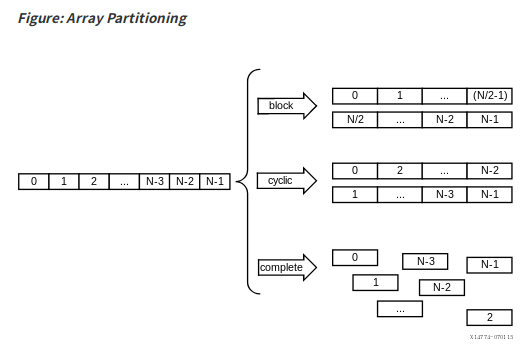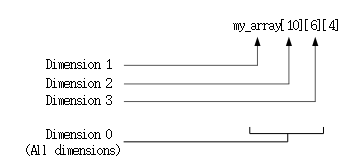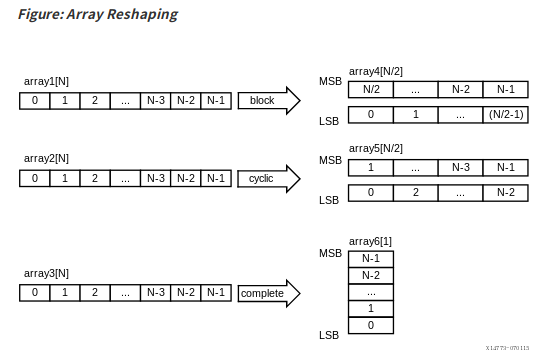HLS Optimization: Local Memory Bandwidth
Array Partition
#pragma HLS array_partition variable=<variable> <block, cyclic, complete> factor=<int> dim=<int>


Array Reshape
#pragma HLS array_reshape variable=<variable> <block, cyclic, complete> factor=<int> dim=<int>

Reshapes (partition and maps) an 8-bit array with 17 elements, AB[17], into a new 32-bit array with five elements using block mapping.
#pragma HLS array_reshape variable=AB block factor=4
TIP: factor=4 indicates that the array should be divided into four. So 17 elements is reshaped into an array of 5 elements, with four times the bit-width. In this case, the last element, AB[17], is mapped to the lower eight bits of the fifth element, and the rest of the fifth element is empty.
Reshapes the two-dimensional array AB[6][4] into a new array of dimension [6][2], in which dimension 2 has twice the bit-width:
#pragma HLS array_reshape variable=AB block factor=2 dim=2
Reshapes the three-dimensional 8-bit array, AB[4][2][2] in function foo, into a new single element array (a register), 128 bits wide (4*2*2*8):
#pragma HLS array_reshape variable=AB complete dim=0
TIP: dim=0 means to reshape all dimensions of the array.
Reference:
1. https://www.xilinx.com/support/documentation/sw_manuals/xilinx2015_2/sdsoc_doc/topics/calling-coding-guidelines/concept_increasing_local_memory_bandwidth.html
2. https://japan.xilinx.com/html_docs/xilinx2017_4/sdaccel_doc/mrl1504034361747.html




